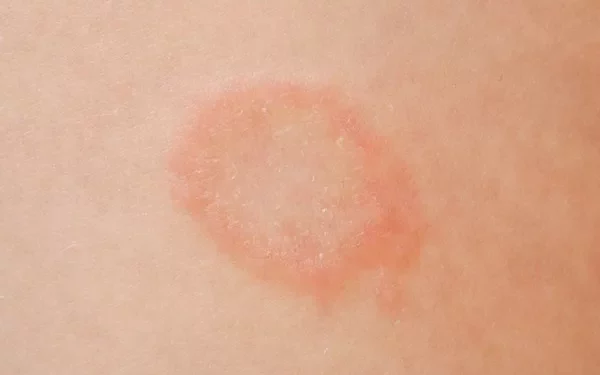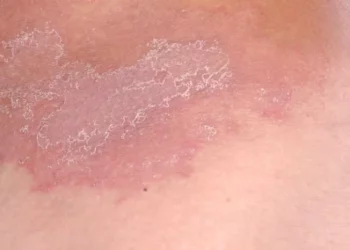Ringworm, despite its misleading name, is not caused by a worm. It is a fungal infection that affects the skin, scalp, and nails. The condition, known medically as tinea, presents as a red, itchy, circular rash with clear skin in the middle. It can affect anyone, regardless of age or health status, and is commonly spread through direct skin-to-skin contact or by sharing personal items such as towels or clothing.
Given its prevalence and the discomfort it causes, people often seek quick and effective remedies. One of the more drastic and dangerous methods some individuals consider is burning the ringworm off. This article will explore this notion in depth, discussing what ringworm is, the dangers of attempting to burn it off, and safer, more effective treatment options.
Understanding Ringworm
The Nature of the Fungus
Ringworm is caused by dermatophytes, a type of fungi that thrive on keratin, the protein in the outer layer of skin, hair, and nails. There are several species of dermatophytes, including Trichophyton, Microsporum, and Epidermophyton, which can cause infection in humans.
The fungi thrive in warm, moist environments, making locker rooms, swimming pools, and tight clothing common breeding grounds. Pets can also be carriers, and the infection can easily spread from animals to humans.
Symptoms and Diagnosis
The classic symptom of ringworm is a round, red, scaly patch on the skin that may be itchy. The center of the patch often clears as it enlarges, creating a ring-like appearance. On the scalp, ringworm can cause bald patches and scaling. In the nails, it can lead to thickening, discoloration, and brittleness.
Diagnosing ringworm typically involves a visual examination by a healthcare provider. Sometimes, they might use a special light called a Wood’s lamp to detect the fungus or take a skin scraping to examine under a microscope or send to a lab for culture.
The Myth of Burning Ringworm Off
The Misconception
The idea of burning ringworm off likely stems from a desire for a quick fix. The concept might come from historical treatments where heat was used to manage infections, or from the belief that burning can sterilize or kill the fungus.
The Reality and Risks
Attempting to burn ringworm off is extremely dangerous and medically unsound. Here are the key reasons why:
1. Skin Damage and Scarring: Burning the skin can cause significant damage, leading to burns, blisters, and permanent scarring. The sensitive areas affected by ringworm, such as the face or scalp, are especially susceptible to damage.
2. Infection: Creating an open wound increases the risk of bacterial infection. The skin acts as a barrier against pathogens, and compromising this barrier through burning can lead to serious complications.
3. Pain and Discomfort: Burns are notoriously painful and can cause prolonged discomfort far worse than the itching caused by ringworm. The pain from burns can also lead to unnecessary suffering and complications in wound care.
4. Ineffectiveness: Burning the surface of the skin does not address the root of the fungal infection. The fungi live in the deeper layers of the skin and the hair follicles, so superficial burns are unlikely to eradicate the infection and may, in fact, worsen the condition.
Professional Medical Opinion
Healthcare professionals universally advise against burning ringworm off. Instead, they recommend proven treatments that target the fungus effectively and safely.
Safe and Effective Treatments
Topical Antifungal Treatments
Topical treatments are often the first line of defense against ringworm. These include creams, ointments, gels, and sprays that contain antifungal agents. Common over-the-counter antifungals include clotrimazole, miconazole, and terbinafine.
1. Clotrimazole: This antifungal medication works by inhibiting the growth of the fungus. It is available in various forms, including creams and lotions, and is usually applied twice a day for several weeks.
2. Miconazole: Similar to clotrimazole, miconazole disrupts the fungal cell membrane, leading to the death of the fungus. It is commonly found in many antifungal products.
3. Terbinafine: This medication can be applied once or twice daily and is known for its effectiveness in treating a variety of fungal infections. It works by preventing the fungus from producing ergosterol, an essential component of the fungal cell membrane.
SEE ALSO: Why Do I Get Ringworm in the Same Place
Oral Antifungal Medications
For more severe or widespread infections, oral antifungal medications might be necessary. These include:
1. Griseofulvin: Often used for scalp and nail infections, griseofulvin works by inhibiting fungal cell division. It requires a longer treatment period, typically several weeks to months.
2. Terbinafine: Available in oral form as well, terbinafine is effective for treating infections that do not respond to topical treatments. The duration of treatment can vary depending on the severity of the infection.
3. Itraconazole: This medication is used for various fungal infections and is effective in treating ringworm of the nails and other areas. It works by interfering with the synthesis of the fungal cell membrane.
Home Remedies and Adjunct Treatments
While medical treatments are crucial, some home remedies can support recovery and alleviate symptoms:
1. Keeping the Area Clean and Dry: Since fungi thrive in moist environments, keeping the affected area clean and dry can help control the infection. Regularly washing the area with soap and water and thoroughly drying it can prevent the fungus from spreading.
2. Tea Tree Oil: Known for its antifungal properties, tea tree oil can be applied topically to help combat the infection. However, it should be diluted with a carrier oil to prevent skin irritation.
3. Garlic: Some studies suggest that garlic has antifungal properties. Crushing garlic and applying it to the affected area might help, but it can also cause skin irritation, so caution is advised.
4. Apple Cider Vinegar: Known for its acidic nature, apple cider vinegar can create an environment that is hostile to fungi. Diluting it with water and applying it to the skin can be beneficial.
Prevention Strategies
Preventing ringworm is an essential part of managing the infection and avoiding its recurrence. Some effective prevention strategies include:
1. Personal Hygiene: Regular bathing, handwashing, and keeping the skin clean and dry are fundamental steps in preventing ringworm. Avoiding sharing personal items like towels, clothes, and grooming tools can also reduce the risk of transmission.
2. Pet Care: Since pets can be carriers of ringworm, regular veterinary check-ups and maintaining good hygiene for pets are crucial. If a pet is infected, it should be treated promptly, and household items should be cleaned thoroughly.
3. Environmental Control: Disinfecting common areas, especially in places like gyms, swimming pools, and locker rooms, can help control the spread of ringworm. Using antifungal sprays on shared surfaces can be beneficial.
4. Clothing and Footwear: Wearing breathable fabrics and avoiding tight clothing can help reduce moisture build-up. In public showers or pool areas, wearing sandals or shower shoes can prevent direct contact with contaminated surfaces.
Conclusion
The idea of burning ringworm off is not only ineffective but also dangerous. Ringworm is a common fungal infection that requires appropriate treatment with antifungal medications. Attempting to burn the infection can lead to serious skin damage, infections, and prolonged suffering. Instead, individuals should seek safe and effective treatments such as topical and oral antifungal medications, supported by good hygiene practices and preventive measures.
Consulting with a healthcare provider for a proper diagnosis and treatment plan is essential. By following medical advice and using approved treatments, individuals can effectively manage and overcome ringworm without resorting to harmful and misguided practices. Remember, safety and health should always come first, and there are proven methods to treat and prevent ringworm effectively.
Related Topics:

























